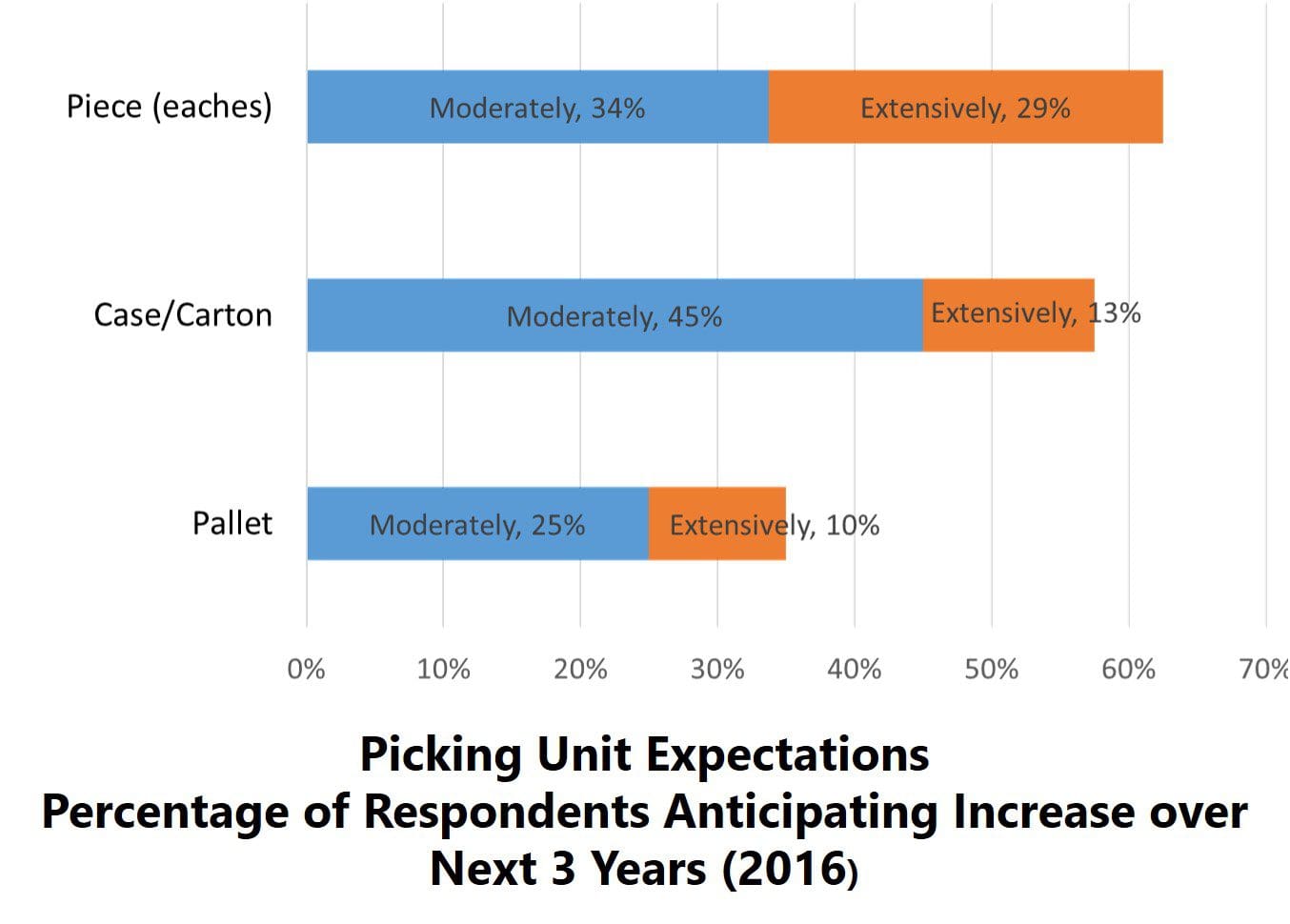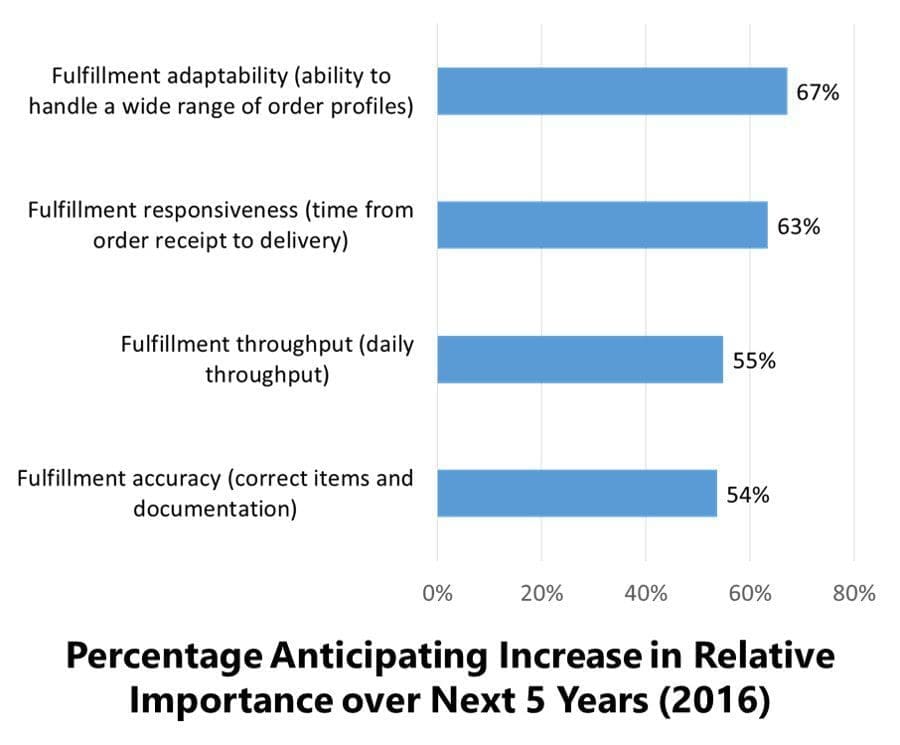It was three years ago that Logistics Viewpoints and DC Velocity launched a survey of logistics practitioners to evaluate the future direction fulfillment facilities, technologies, and practices. The survey’s format evaluated past, present state, and expectations for three years into the future. The findings, published on Logistics Viewpoints and on DCVelocity.com, were well received.
Last week Logistics Viewpoints (ARC Advisory Group) launched a new survey (The Future of Warehousing and Fulfillment) that will serve as a sequel to this research. We are evaluating the current state of operations, comparing this state to our past predictions, and evaluating the markets priorities and expectations for three years from today.
 What We Learned
What We Learned
Our survey results from 2016 showed that fulfillment accuracy still reigned supreme as the most important warehouse capability. But interestingly, it also showed that adaptability (the ability to handle a wide range of order profiles) and responsiveness (time from order receipt to delivery) were becoming increasingly more important in the world of e-commerce fulfillment.
This year’s research will inquire more extensively into warehouse order fulfillment profiles and processes in use. With respect to order types, three years ago direct-to-consumer and drop-ship were most expected to experience growth (In fact, ARC’s recent research into the warehouse automation market shows that e-commerce fulfillment demands did grow even more quickly than practitioners expected just a couple years ago). With respect to picking operations, piece picking was expected to increase most extensively, followed by cases and then pallets. This trend has certainly occurred. But how have warehouse operations responded to these changing demands? This year’s research will find out.

How are Warehouse Operations Responding?
An important addition to this year’s research is our inquiry into process changes being implemented to meet the high-volume, quick-response fulfillment demands in today’s market. For example, how widespread is the use of intelligent, system directed order batching/waves? And is the use of waves increasing or decreasing in prevalence? Put-walls are viewed as an effective way to consolidate multi line item orders for shipping. But how widespread is this practice, and is it increasingly common or is its use on the decline? In contrast, system directed waveless order processing is viewed as a responsive method for handling high-priority orders that require prompt fulfillment. How widespread is this practice? Is it still used only in limited cases, or is it widespread due to e-commerce demands? And is this practice expected to increase? Finally, what technology and processes are being used today and are expected to be used in the future to manage waveless (or dynamic release) fulfillment?
Past Present, Past Future, Present, and Present Future
Data from the prior survey will be used as an additional frame of reference for the trajectory of change for the common questions with this year’s survey. The survey was designed to provide valuable context for fulfillment operations, including the priorities of one’s peers, current practices in use, and expectations for the future. Of course, this year’s survey will also include a broad-based inquiry about warehouse technology use, demand, and purchasing priorities.
We encourage qualified practitioners to take the survey, and we will provide those participants with a summary of our findings as a sign of our appreciation (please find survey link at end of this article). The full spectrum of responses will provide a comprehensive snap shot of fulfillment capabilities, practices, changes in practices, investment priorities, and expectations for the future.
If you are a qualified practitioner, and you would like to take this survey, please click on the link below:
Survey: The Future of Warehousing and Fulfillment
If you have any questions, feel free to contact me at creiser@arcweb.com.

















